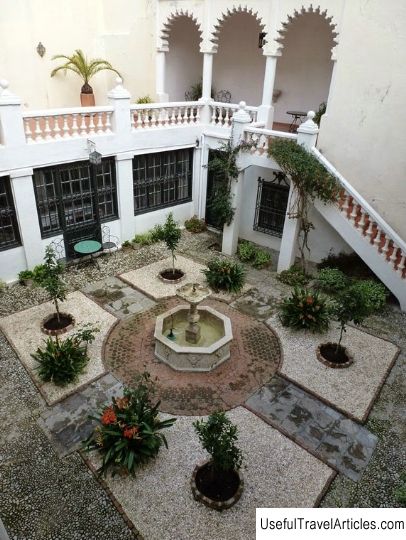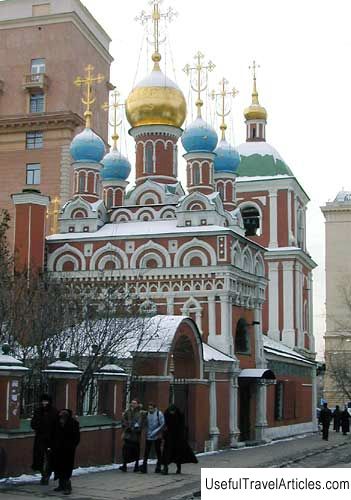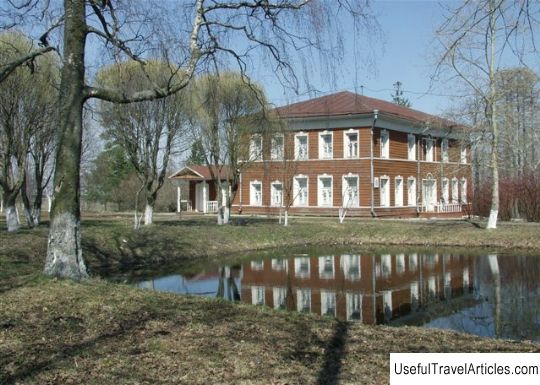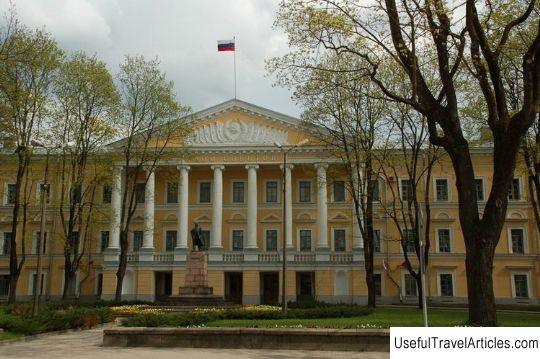Museum of the Diplomatic Corps description and photos - Russia - North-West: Vologda
Rating: 8,8/10 (8432 votes) 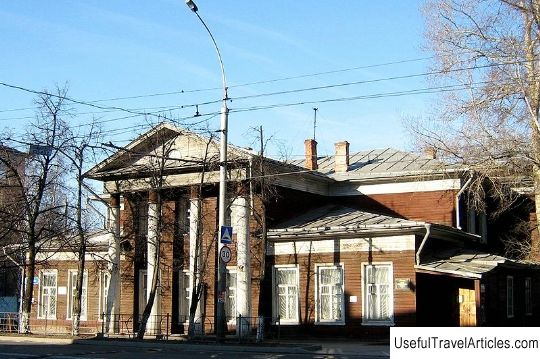
Museum of the diplomatic corps description and photos - Russia - Northwest: Vologda. Detailed information about the attraction. Description, photos and a map showing the nearest significant objects. Photo and descriptionThe Museum of the Diplomatic Corps is a private history museum, located in the house of P.D. Puzan-Puzyrevsky. The house in which the museum is located is a wooden mansion and an architectural monument of the early 19th century; the building previously housed the American Embassy in 1918. The permanent exhibition introduces those events that were little known and little studied, and took place in Vologda from February to July 1918, and were also closely associated with the presence of 11 foreign missions and embassies in the city, headed by David Francis Rowland - the American ambassador. At the end of the winter of 1918, the city became the "diplomatic capital of Russia" for 5 months. At that time there was a threat of the capture of Petrograd by German troops. Representatives of all 11 embassies (English, American, French, Belgian, Serbian, Italian, Siamese), missions (Swedish-Danish, Chinese, Japanese) and the Brazilian consulate headed by the American ambassador were evacuated to Vologda. Francis chose Vologda because of its greatest remoteness from the hotbed of hostilities, as well as a good transport position and convenience of telegraph communication, because Vologda was located at the intersection of the most significant and important railways - these are the reasons that became decisive in choosing an evacuation point. p> During all 5 months during which the diplomats stayed in Vologda, they studied the political environment in Soviet Russia and reported to the governments of their countries some practical recommendations. This kind of action did not go unbeknownst to the Bolshevik leadership, which increasingly strengthened its power in the city and carried out counter-revolutionary repressions. On July 24, 1918, under incredible pressure from the Bolsheviks, the foreign diplomatic embassy left Vologda. Later, the stay of diplomats in Vologda fell into oblivion, because only the mention of it could serve to create a dangerous political situation. In the state Soviet propaganda, diplomats of all countries were exposed as "accomplices of global imperialism" and began to mention them only under the guise of their activities, which were aimed at the complete overthrow and destruction of Soviet power. Nevertheless, for a fairly long period in the West, it was believed that foreign diplomats simply lost time during their stay in Vologda. Only in the 90s of the 20th century in journalistic and research works such significant historical importance of diplomatic activity in Vologda began to be realized. During 1996, the Vologda historian A.V. Bykov. began to actively seek and accumulate material about the stay of the diplomatic corps in his city during the years of the Bolshevik rule. He managed to accumulate some objects that surrounded members of the diplomatic line in everyday life, as well as copies of important documents from the personal and local archives of Francis D.R. in St. Louis. July 16, 1997 in the Puzan-Puzyrevsky mansion P.D. , namely, in a wooden house of the early 19th century, where the American embassy was previously located, A.V. Bykov. organized an exhibition entitled "Foreign Embassies in Vologda in 1918". It was this day that became the date of the foundation of the museum, which to this day was located within the walls of the Puzan-Puzyrevsky mansion. After some time, Bykov managed to get access to the materials of the Diplomatic Archives in France, as well as the operational archive of the FSB, where he was able to make copies of documents related to the activities of the French Embassy in the city of Vologda. Thanks to these materials, on June 25, 1998, with the participation and support of the American Embassy in Russia, the opening ceremony of two rooms in the Museum of the Diplomatic Corps was significantly expanded and the opening ceremony of two rooms in the Museum of the Diplomatic Corps was held, which was attended by the Ambassador from the United States, James Collins. In a short time of its existence, close relatives of the participants in the actions of 1918 became friends and guests of honor of the museum: Sir Chips Keswick, Jean Dulce, Tanya Rose and others,      We also recommend reading Church of the Intercession of the Most Holy Theotokos description and photos - Crimea: Sudak Topic: Museum of the Diplomatic Corps description and photos - Russia - North-West: Vologda. |
